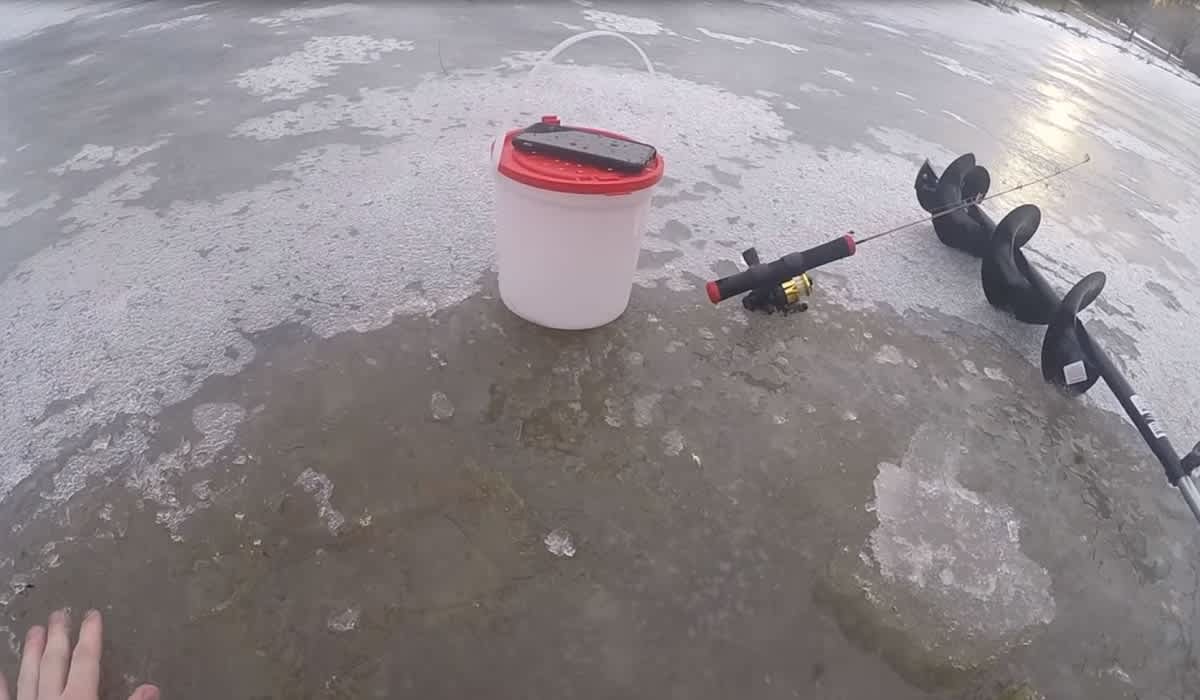NFL Offensive Lineman Falls Through the Ice While Ice Fishing
OutdoorHub Reporters 01.14.20

NFL offensive lineman Frank Ragnow is an avid outdoorsman. The 6′ 5, 300 lb center for the Detroit Lions often films his hunting and fishing adventures, and posts them on his YouTube channel called Grizzly Man Outdoors.
Ragnow was born in Sioux Falls, South Dakota where he developed a passion for the outdoors at a young age. With all that being said, you would think the big fella would use a little more caution before walking out on questionable ice to do a little ice fishing. Alas, that’s not how it went down for the second-year center, and the whole thing was captured on his GoPro camera:
Ragnow seems to be a good sport about the incident, and turns the whole debacle into a teaching moment.
The first thing we will point out is how Frank grabs the augur blade when he falls into the water. Never a good idea. The blades on an augur are razor sharp, and the last thing you want in this situation is a giant gash in your hand. If possible, toss the augur towards shore to prevent further injury while you focus on getting out of the frigid water as soon as possible.
Ragnow does a good job of remaining calm in this dangerous situation, and we hope he learned his lesson. Stay safe out there, Frank!
In order to maximize safety when ice fishing, it’s important to keep a few things in mind about ice:
- New ice is usually stronger than old ice. Four inches of clear, newly formed ice may support one person on foot, while a foot or more of old, partially thawed ice may not.
- Ice seldom freezes uniformly. It may be a foot thick in one location and only an inch or two just a few feet away.
- Ice formed over flowing water and currents is often dangerous. This is especially true near streams, bridges and culverts. Also, the ice outside river bends is usually weaker due to the undermining effects of the faster current.
- The insulating effect of snow slows down the freezing process. The extra weight also reduces how much weight the ice sheet can support. Also, ice near shore can be weaker than ice that is farther out.
- Booming and cracking ice isn’t necessarily dangerous. It only means that the ice is expanding and contracting as the temperature changes.
- Schools of fish or flocks of waterfowl can also adversely affect the relative safety of ice. The movement of fish can bring warm water up from the bottom of the lake. In the past, this has opened holes in the ice causing snowmobiles and cars to break through.
As a general rule of thumb, follow the ice thickness recommendations below:
- 2″ or less – STAY OFF
- 4″ – Ice fishing or other activities on foot
- 5″ – Snowmobile or ATV
- 8″ – 12″ – Car or small pickup
- 12″ – 15″ – Medium truck
Note: These guidelines are for clear, solid ice. Many factors other than thickness can cause ice to be unsafe. Double the above thickness guidelines when traveling on white ice to ensure ice safety.

